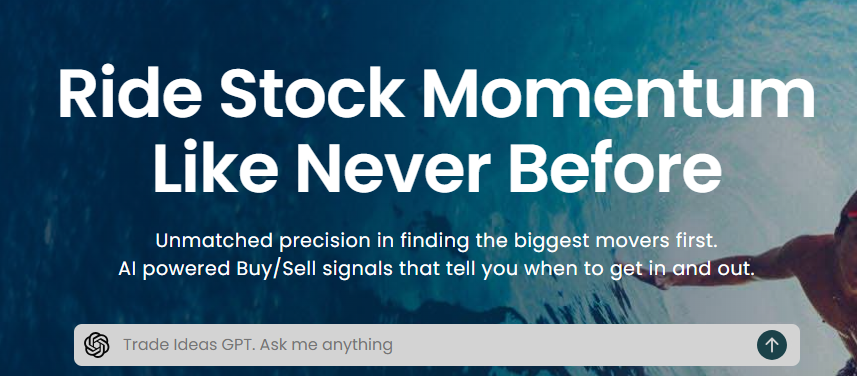20 Handy Tips For Deciding On AI Stock Analysis Sites
20 Handy Tips For Deciding On AI Stock Analysis Sites
Blog Article
Top 10 Tips For Assessing The Market Coverage For Ai Software For Predicting And Analysing Stocks
When you are evaluating AI trading platforms that can predict or analyze stocks, market coverage is a key aspect to take into consideration. It determines what assets and markets are readily available. A platform that has extensive market coverage will allow you to diversify your portfolio, explore new opportunities around the world, and adjust to different trading strategies. Here are the top ten ways to assess the market cover of these platforms.
1. Evaluate Supported Asset Classes
Stocks: Make sure the platform includes the major exchanges for stocks (e.g., NYSE, NASDAQ, LSE, HKEX) and includes small-cap, mid-cap, and large-cap stocks.
ETFs. Make sure the platform offers a variety of ETFs so you can have a diverse exposure.
Futures and options. Check to see if your platform offers derivatives such as futures, options or any other leveraged instrument.
Forex and commodities: Check whether the platform can support currency pairs, precious metals, agricultural commodities, and energy commodities.
Cryptocurrencies Make sure the platform can support popular cryptocurrencies like Bitcoin, Ethereum, and altcoins.
2. Verify coverage in your area
Global markets - Ensure that the platform is able to cover every major market around the globe including North America (including Canada), Europe, Asia-Pacific markets and emerging ones.
Focus on regional markets: Find out if a platform is focused on regions or specific markets which are in line with your trading goals.
Local exchanges: Verify if your platform supports regional and local exchanges that match your needs or your business plan.
3. Assessment Real-time vs. delayed data
Real-time Market Data: The system must provide real-time trading data to facilitate quick decision-making.
Data that is delayed: Find out if delayed data is available at no cost or at a lower cost. This could be enough for investors who are looking to invest long-term.
Latency of data. Verify whether the platform minimizes the time it takes to process real-time feeds particularly when it comes to high-frequency trading.
4. Examine the historical availability of data
In depth of Historical Data Check that the platform provides extensive historical data for backtesting analysis, testing and analysis (e.g. 10plus years).
Review the accuracy of historical data.
Corporate actions: Find out if the historical information includes stock splits and dividends.
5. Verify Market Depth and Order Book Information
Level 2 data: Make sure that the platform contains Level 2 data for price discovery and improved execution.
Verify the bid-ask ranges in order to make sure you are getting the most accurate price.
Volume data - Determine if the platform has specific volume data for studying market activities and liquidity.
6. Check the extent of coverage for Indices and Sectors
Major indices - Ensure the platform is compatible with major indices like S&P 500 and FTSE 100 to benchmark.
Information from specific industries: To perform a focused analysis, verify whether the platform contains information for specific sectors (e.g. technology, health care technology).
Custom indices. Make sure the platform has the capability to track or build custom indices that meet your requirements.
7. Integrate News and Sentiment Data
News feeds - Ensure the platform is integrating real-time news feeds that contain market-moving news from trusted (e.g. Bloomberg or Reuters) sources.
Sentiment analysis Check to determine whether your platform supports sentiment analysis tools that use social media data, news sources, or another data source.
Event-driven strategy: Verify that the platform supports the use of event-driven trading strategies (e.g. announcements of earnings economic reports, announcements of earnings).
8. Verify Multi-Market Trading Capability
Cross-market trading: Make sure that the platform permits trading across asset and market categories through a single interface.
Currency conversion: Check if your platform supports multiple-currency trading and automated currency conversion.
Support for time zones: Check if your platform allows you to trade across multiple time zones.
9. Assessment of Alternative Data sources
Alternative data: To gain unique insights, check that your platform utilizes alternative data (e.g. satellite imagery web traffic, satellite imagery, or credit card transactions).
ESG data: Determine if the platform includes environmental social, governance, and (ESG) information to support socially responsible investing.
Macroeconomic data: Ensure the platform has macroeconomic indicators (e.g., inflation, GDP, interest rates) to conduct a fundamental analysis.
Review reviews and feedback from customers as well as the reputation of the market
User feedback is a great method to assess the market coverage of a platform.
Reputation in the industry: Check if the platform has been recognized by industry experts in terms of market coverage.
Case studies: Look for testimonials or case studies that highlight the platform's success in particular markets or asset classes.
Bonus Tips
Free trial period: Check the market coverage of the platform as well as its data quality with either a trial or demo.
API access - Check if the API can be used to access data on the market by programming.
Customer Support: Make sure that the platform is able assist with any market-related issues or data problems.
Use these guidelines to assess the market coverage offered by AI stock trading platforms. Choose a platform with access to the markets, information and tools you need for successful trading. Market coverage that is comprehensive allows you to diversify your portfolio, discover new possibilities, and adjust to changing market conditions. See the most popular options ai for site tips including AI stocks, best AI stock trading bot free, best AI stock trading bot free, trading with ai, ai for investing, incite, best ai trading software, investing ai, ai investment platform, ai trading tools and more.
Top 10 Tips On Assessing The Risk Management Of AI stock Prediction And Analysis Of Trading Platforms
Risk management is a crucial element of every AI trading platform. It can help protect your investment while minimizing the risk of losses. A platform that has robust risk management tools will assist you in navigating uncertain markets and make educated decisions. Here are the 10 best tips for assessing the risk management capabilities of these platforms: capabilities:
1. Evaluate Stop-Loss and Take-Profit Features
Levels that can be customized - Make sure that the platform allows you modify your stop-loss, take-profit and profit levels for each trade or strategy.
Find out if your trading platform supports trailing stop which automatically adjusts in the event that the market moves toward your.
Stop-loss guarantee: Check to find out if the platform offers stop-loss guarantees, which will ensure that your position will close at a certain price, even in volatile markets.
2. Useful Tools for Assessing Position Size
Fixed amount: Make sure that the platform lets you determine the size of your position based on an amount that is fixed in monetary terms.
Percentage of your portfolio: See whether you are able to set position sizes in percentages of your overall portfolio to reduce risk proportionally.
Risk-reward ratio: Determine whether the platform can set risk-reward ratios for specific trades or strategies.
3. Look for Diversification Aid
Multi-asset Trading to diversify your portfolio of investments, make sure that the trading platform you select allows trading across multiple asset classes.
Sector allocation check to determine whether there are any tools that can be used to manage and monitor exposure to the sector.
Diversification of geographic areas. Check if the platform can trade internationally and spread geographic risks.
4. Assess Margin and Leverage Controls
Margin requirements. Make sure you know the margin requirements before trading.
Limits on leverage: Find out whether the platform allows users to set leverage limits to limit the risk exposure.
Margin Calls: Ensure that the platform sends out promptly notifications about margin calls to prevent the liquidation of your account.
5. Assess the risk Analytics and Reporting
Risk metrics: Ensure whether the platform has important risk indicators like Sharpe ratio and Drawdown, for your portfolio.
Scenario assessment: See whether you can simulate various market scenarios using the platform in order to determine the potential risk.
Performance reports: Check if you can get detailed reports on performance from the platform, which include risk-adjusted results.
6. Check for Real-Time Risk Monitoring
Portfolio monitoring - Make sure that the platform you select provides real-time monitoring so that your portfolio is secure.
Alerts and notifications. Ensure that the platform has sent out alerts at the moment that certain risk-related events occur (e.g. margin breaches or triggers for stop-loss order).
Risk dashboards: Make sure the platform has customized risk dashboards that give you a complete view of your profile.
7. Evaluation of Backtesting and Stress Testing
Stress testing - Ensure that your platform lets you test your portfolios and strategies in extreme market situations.
Backtesting: Check if the platform supports backtesting strategies based on old data to gauge risk and performance.
Monte Carlo Simulations: Check whether the platform uses Monte Carlo simulations in order to analyze and predict the possible results.
8. Risk Management Regulations Compliance Assessment
Compliance with regulatory requirements: Ensure your platform is in compliance with the relevant regulations for risk management in Europe and the U.S. (e.g. MiFID II).
Best execution: Make sure that the platform follows the highest standards of execution, and ensures that transactions are executed at the highest prices to avoid the chance of slippage.
Transparency - Check to see whether the platform has disclosed the risks in a clear and open and transparent manner.
9. Verify the risk parameters controlled by the user.
Custom Risk Rules: Make sure you are able to define your own rules for risk management (e.g. the maximum amount of daily loss, a certain size of a tradable position).
Automated risk controls You should check whether your system can implement risk management policies upon the parameters you've set.
Manual overrides: Ensure that the platform supports manual overrides during emergency situations.
10. Review User Feedback and Case Studies
User reviews: Examine user feedback to gauge the platform's efficiency in assessing risk.
Case studies: Look for examples or testimonials that demonstrate the platform's risk management capabilities.
Community forums: Find out if the platform has an active user community where traders can share tips for managing risk and strategies.
Bonus Tips
Trial period: Make use of a no-cost demo or trial to experience the risk management capabilities of the platform in realistic scenarios.
Customer Support: Verify that the platform is able to provide comprehensive support in the event of any risk management-related issues or concerns.
Check for educational sources.
These tips will help you determine the risk management capabilities of AI analysis and stock prediction platforms. In this way you can pick a platform that safeguards your investment and reduces the risk of losses. It is essential to have robust risk-management tools to be able to navigate market volatility. Follow the best ai tools for trading for more info including ai copyright signals, ai software stocks, trading ai tool, best AI stocks, can ai predict stock market, AI stock analysis, AI stock prediction, investing with ai, AI stock analysis, stock trading ai and more.